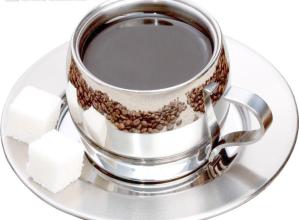Introduction of Aldumara Coffee beans, the Top Coffee beans in Mexico
During the harvest, farmers harvest fresh red fruit every day, and every two days the coffee fruit is sent as a unit or sold to a water washing plant for treatment. coffee fruit without a water treatment plant is usually naturally fermented for about 12 hours, and then passed through the sun for drying and shelling. in any case, farmers always try their best to send them to the water treatment plant for treatment. In order to sell better under the name of "washing treatment", in the water wash, coffee cherries soften the pulp after soaking and fermenting for about 12 hours, then pass through the waterway and stir to separate the pulp from the coffee beans. the pulp is discharged with the floodgates, while coffee beans need six days of sunshine to dry, but the processing time is only from sunrise to 11:00 and from 03:00 to sunset. The water content of raw beans after treatment should be about 12% ~ 12.5%. After selecting residual or shoddy beans, they are packed in sacks and trucked to the coffee auction house in the capital, Addis Ababa.
There are many water treatment plants on the main roads of coffee producing areas, especially in Jima area, and a large number of treatment plants are not fully utilized because of the fierce competition, so the person in charge of the treatment plant pays a higher price to the farmers, but worries about whether they can make a profit. Nowadays, a kilogram of raw beans usually sells for about 2 Birr (Ethiopian units). During the whole harvest period, the employees of the treatment plant worked for two months without a rest day, with a daily capacity of about ten bags per plant.
There are institutions such as research institutes in Jima, and farmers are taught to introduce new technologies and apply green manure crops to reduce fertilizer costs and improve the seeds of new varieties, so that coffee trees can have stronger resistance. the seeds are cultivated and grown for a year before they are resold to farmers who use improved seeds and methods to plant and do not blossom until the seventh year. In the past, yields were about 600lbs per hectare, but improved yields could reach 1000 pounds per hectare, and the agency even guaranteed yields of at least 700lbs per hectare.
There are several other coffee cooperation organizations in Gima, where members share water and fertilizers, and few members are deprived of their wages under their organizations and provide health insurance for each member.
The state-owned farm has about 21000 hectares, and five large farms are located in TEPI and BEBEKA. The area is close to Jima but mostly belongs to lower areas. Each single farm occupies at least 1050 hectares of land. During the production period, the farm owner uses about 3000 long-term workers and about 3000 temporary employees, and the farm has its own washing plant. Its capacity can handle about 6000 pounds of raw beans per hour, and the higher quality raw beans can be sold by 32Birr per kilogram. The farm warehouse can also store 300000 pounds.
Nowadays, there are more and more water washing treatment plants in Ethiopia. Small farmers sell the harvested coffee fruit to the processing plant, peel it and resell it in the auction system, and then transfer it to the port of Assab in Eritrea in the Red Sea and the port of Djibouti in Djibouti near the Bay of Aden. The coffee is the country's main agricultural export, but its own annual consumption is also astonishing, about 1500000bags/60kg. Accounted for 50% of the total generation. Wild coffee grows in the tropical rain forests of the southwestern plateau, and most of them are selected by hand, but because of this, many local people maliciously destroy the naturally formed rainforest areas-either felled or burned in order to reach the rugged mountains that are inaccessible. But it seriously affected the ecological balance. Put the coffee beans in a special house with ventilation on all sides, and about a week later, the coffee beans are packed in loosely packed bags so that the wind can blow through the bags. After about seven weeks, the coffee beans changed color and taste. Finally, these coffee beans are selected manually, and the coffee beans of high quality are selected and officially bagged for preservation.
Aldura coffee beans are the top coffee beans in Mexico. This coffee beans have large granules and have strong sweet, sour and good aroma.
Mexicans are optimistic and enthusiastic, and it can also be seen from their coffee that the mellow Mexican coffee is not only loved by the native people, but also praised by many coffee connoisseurs. There are many ways to taste Mexican coffee, mainly divided into alcoholic and non-alcoholic practices.
Non-alcoholic Mexican coffee often goes with milk. Heat a cup of milk, a teaspoon of cinnamon powder and a teaspoon of vanilla powder in a pot at medium temperature, not too hot, and do not boil the milk. Then add the cocoa powder, fully dissolve and stir well. If you like chocolate, you can use chocolate paste instead of cocoa powder and milk. Let the milk dry for about 5 minutes, wait until the milk is slightly cool, then pour into the prepared coffee, decorate the coffee surface with cold cream, then decorate with a piece of cinnamon, and the Mexican coffee is ready. The aromas of chocolate and cinnamon blend together to give off the smell of desert. Tasting such a cup of coffee, you seem to be walking through a desert full of vicissitudes.
Another way is to mix Mexico's most famous tequila with coffee, first pour a small glass of tequila at the bottom of the cup.

Important Notice :
前街咖啡 FrontStreet Coffee has moved to new addredd:
FrontStreet Coffee Address: 315,Donghua East Road,GuangZhou
Tel:020 38364473
- Prev

Nekisse Red N2 Ethiopian Native Species Fine Coffee Black Coffee
The second wave of coffee people used subjective rules of thumb to describe coffee extraction
- Next

Introduction to Ethiopian Sidamo Coffee with moderate mellow and sweet spice
The coffee in Sidamo has a variety of flavors. Different soil types, microclimates and countless native coffee species, towering mountains, highlands, plateaus, valleys and plains, diverse topography, and the geology of the area belongs to nutrient-rich, well-drained volcanic soil. the depth of the soil is nearly two meters, and the surface soil is dark brown or brown. The biggest advantage of the place is
Related
- Does Rose Summer choose Blue, Green or Red? Detailed explanation of Rose Summer Coffee plots and Classification in Panamanian Jade Manor
- What is the difference between the origin, producing area, processing plant, cooperative and manor of coffee beans?
- How fine does the espresso powder fit? how to grind the espresso?
- Sca coffee roasting degree color card coffee roasting degree 8 roasting color values what do you mean?
- The practice of lattes: how to make lattes at home
- Introduction to Indonesian Fine Coffee beans-- Java Coffee producing area of Indonesian Arabica Coffee
- How much will the flavor of light and medium roasted rose summer be expressed? What baking level is rose summer suitable for?
- Introduction to the characteristics of washing, sun-drying or wet-planing coffee commonly used in Mantenin, Indonesia
- Price characteristics of Arabica Coffee Bean Starbucks introduction to Manning Coffee Bean Taste producing area Variety Manor
- What is the authentic Yega flavor? What are the flavor characteristics of the really excellent Yejasuffi coffee beans?

